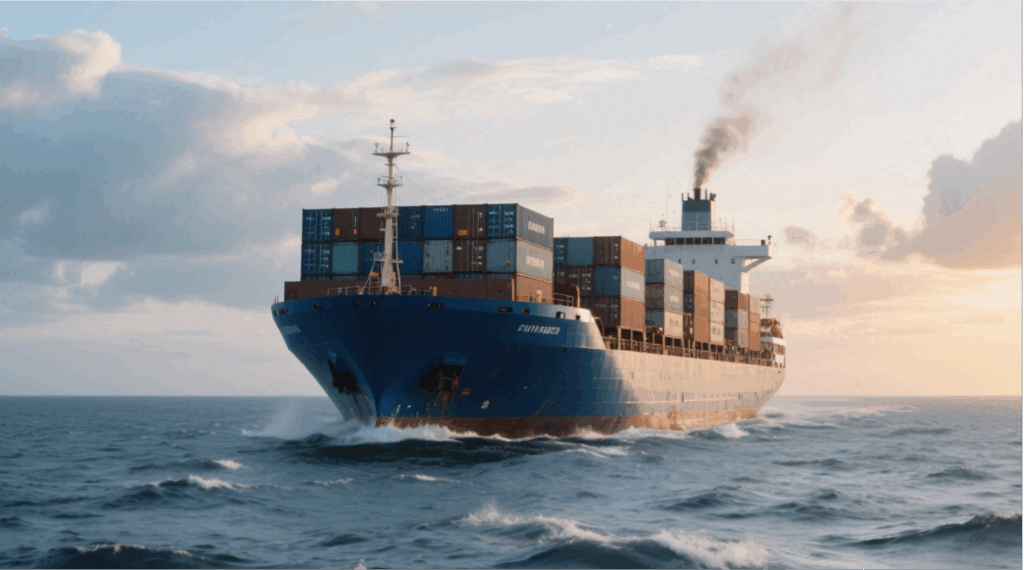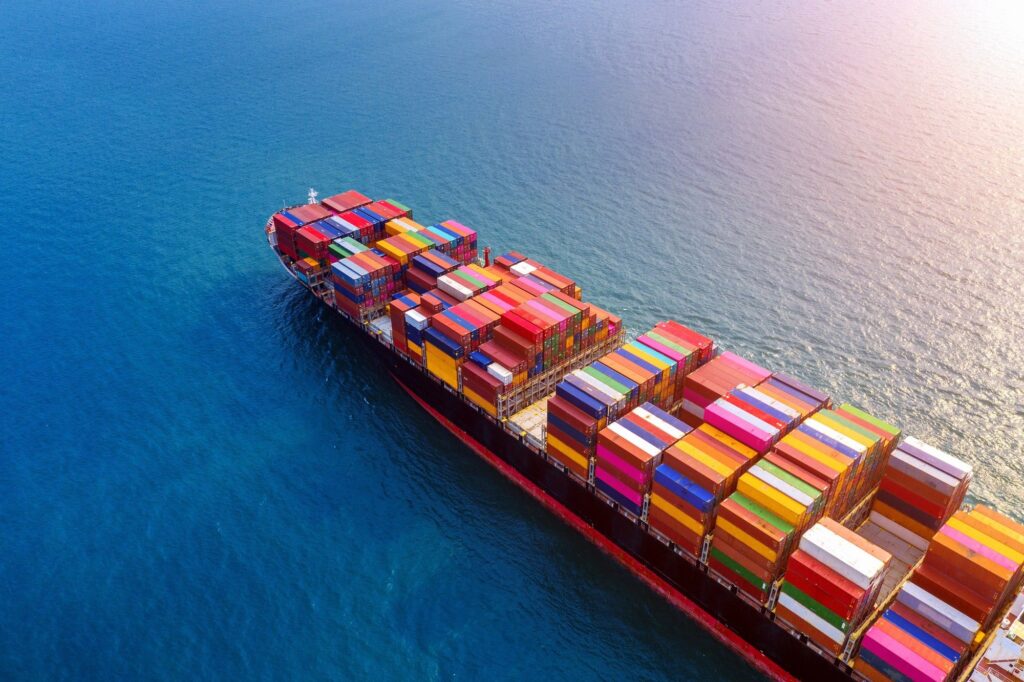- By Della tj
- October 9, 2025
- Sea Freight, Shipping
Shipping cosmetics internationally is fraught with regulatory hurdles, product safety rules, and cost sensitivities. When you choose cosmetics sea freight China to Europe, you gain affordability at scale—but only if you manage transit time, customs, and compliance well. In this article, you will learn how to calculate cost, understand transit times, and avoid pitfalls in the beauty supply chain.
What Is “Cosmetics Sea Freight China to Europe”?
This term refers to the ocean shipping of beauty products — like skincare, makeup, personal care items — from Chinese manufacturers to European countries via sea freight routes. The process typically involves container shipping (FCL/LCL), export documentation, import clearance, and inland delivery in Europe. In addition, cosmetics importers must comply with EU cosmetics regulation, ingredient restrictions, and labeling requirements.
Why Use Sea Freight for Cosmetics from China?
Sea freight is often the most cost-effective choice for non-urgent, bulk cosmetics shipments. Although slower than air, its advantages include:
- Lower cost per unit for large shipments
- Higher capacity and consistency
- Scalability for growing product lines
- Predictability when using contract shipping rates
Nevertheless, cosmetics have extra regulatory burdens—special packaging, MSDS (material safety data sheets), ingredient lists, and EU registration (e.g. CPNP in EU). Thus, logistics must be well synchronized.

How Long Does Cosmetics Sea Freight from China to Europe Take?
Transit time is a critical factor when choosing cosmetics sea freight China to Europe. Below is a table of typical durations:
| Origin Port (China) | Destination Port (Europe) | Port-to-Port Transit | Door-to-Door Estimate |
|---|---|---|---|
| Shanghai → Hamburg | ~28–35 days | ~35–45 days | |
| Shenzhen → Rotterdam | ~30–37 days | ~38–48 days | |
| Ningbo → Le Havre | ~25–32 days | ~32–40 days | |
| Guangzhou → Barcelona | ~32–38 days | ~40–50 days |
These estimates include vessel sailing, port handling, customs clearance, and inland trucking.
As a result, many importers build buffer days in their schedules to guard against delays caused by port congestion, seasonal peaks, or customs inspections.
How Much Does It Cost to Ship Cosmetics by Sea from China to Europe?
Shipping costs depend on container type, freight rates, and destination. The following table gives ballpark figures for 2025 market conditions:
| Type / Mode | Estimated Rate | Volume / Capacity | Notes |
|---|---|---|---|
| 20′ FCL | USD 1,200 – 2,500 | ~33 CBM | Popular for medium cosmetic orders |
| 40′ FCL | USD 2,200 – 4,500 | ~67 CBM | Economies of scale |
| LCL (per CBM) | USD 40 – USD 90 | Shared container | Extra consolidation fees |
| Additional charges | $150–$400 | per container | Terminal, handling, port fees |
For instance, sea freight from Shanghai to Le Havre is about USD 950 for a 20′ container, while LCL runs ~USD 30/CBM.
When shipping cosmetics, additional costs like MSDS, hazardous labels, and special stowage might apply.
What Documents & Compliance Are Required for Cosmetics Imports?
Cosmetic products face more scrutiny than many goods. Below is a checklist tailored for cosmetics sea freight China to Europe:
| Document / Requirement | Purpose / Note |
|---|---|
| Commercial Invoice | Value, HS codes, description of cosmetics |
| Packing List | Carton weights, dimensions |
| Bill of Lading | Title document for the vessel |
| Export Declaration (China) | Chinese export clearance |
| MSDS / SDS | Safety data sheets for ingredients |
| Cosmetic Product Safety Report | EU regulation compliance |
| CPNP Notification | Registration in Cosmetics Product Notification Portal (EU) |
| CE / REACH Certificates | When chemical or packaging is regulated |
| Import Declaration (Customs) | EU import paperwork |
| Labeling Compliance | Language, ingredient list, warnings |
| Insurance Certificate | Cover loss or damage |
Missing or incorrect documents often cause customs holds or rejections at European ports.
Sea Freight vs Air Freight vs Rail for Cosmetics
When assessing cosmetics sea freight China to Europe, compare against other modes:
| Mode | Transit Time | Cost Efficiency | Suitability | Risks / Considerations |
|---|---|---|---|---|
| Sea Freight | 25–45 days | Low cost per unit | Bulk cosmetic lines | Slower, subject to congestion |
| Air Freight | 5–10 days | High cost | Urgent or premium product lines | Expensive, weight limits |
| Rail / Multimodal (via Eurasia) | 15–25 days | Mid to high cost | Central Europe, niche lines | Complexity, gauge changes |
For cosmetics, many brands adopt a hybrid approach: sea for base stock, air or rail for seasonal launches or fast-moving SKUs.
Real Case Studies: Cosmetics Sea Freight from China to Europe
📦 Case Study 1: Guangzhou → Rotterdam (FCL Sea Freight)
- Products: 50,000 units of skincare bottles
- Mode: 40′ FCL container
- Transit Time: 37 days door-to-door
- Cost: USD 3,900 (≈ USD 0.078 per unit)
- Notes: Full container, EU registration done before shipping
📦 Case Study 2: Shanghai → Hamburg (LCL Sea Freight)
- Products: 12,000 units of cosmetics samples and gift sets
- Mode: LCL (shared container)
- Transit Time: 42 days door-to-door
- Cost: USD 1,450 (≈ USD 0.12 per set)
- Notes: Consolidated, extra handling in Hamburg
How to Optimize Cosmetics Sea Freight China to Europe
To streamline your cosmetics sea freight China to Europe operations, use these strategies:
- Consolidate shipments across SKUs to fill containers.
- Negotiate long-term contracts with shipping lines for stable rates.
- Select alternate ports (e.g., Le Havre, Antwerp, Gdansk) to reduce congestion risk.
- Buffer for delays (5–10 extra days) due to inspections or slow steaming.
- Use technology & tracking — live tracking helps manage supply chain visibility.
- Plan customs ahead: prepare MSDS, CPNP, labeling, ingredient lists early.
- Group cosmetics with non-regulated goods in same container when safe and permitted.
Additionally, monitor logistics trends like Arctic direct routes, which may cut transit times.
When Should You Choose Sea Freight for Cosmetics?
Sea freight becomes optimal when:
- Your inventory consists of bulk, non-urgent stock
- You are shipping heavy or bulky items (bottles, jars)
- You have accurate sales forecasts
- You can afford longer lead times
- You want better cost control
For launches or urgent products, air or rail may complement your sea shipments.
Conclusion
Shipping beauty products via cosmetics sea freight China to Europe can significantly lower logistics cost if handled smartly. Although transit is slower than air, the scale advantage, especially for bulk lines, is compelling. By preparing regulatory compliance (MSDS, CPNP, labeling), planning buffer time, choosing optimal ports, and negotiating contracts, you can minimize surprises and deliver reliably across Europe. Let us help you craft a tailored sea freight plan for your cosmetic brand to Europe—start with a quote and compliance check today.
- Consult TJ China Freight Forwarding for the lowest quote. They will provide you with reliable, cost-effective service.
FAQ:
Q1.How long does cosmetics sea freight from China to Europe take?
Typically 25 to 45 days door-to-door, depending on port pairs, vessel schedules, and customs processing.
Q2.Is sea freight safe for cosmetics products?
Yes — with proper packaging, stable conditions, and compliance oversight, cosmetics travel well via sea freight.
Q3.What extra compliance do cosmetics require when shipping to Europe?
You need MSDS, CPNP registration, correct labeling, ingredient lists, cosmetic product safety reports, and Chemical compliance.
Q4.Can I mix cosmetics with other product lines in the same container?
Yes, you can mix cosmetics with non-hazardous goods, provided classification, labeling, and stowage comply with regulations.
Q5.Where is the best European port for cosmetic imports?
Antwerp, Rotterdam, Hamburg, and Le Havre are strategic because of efficient customs and logistics networks.







